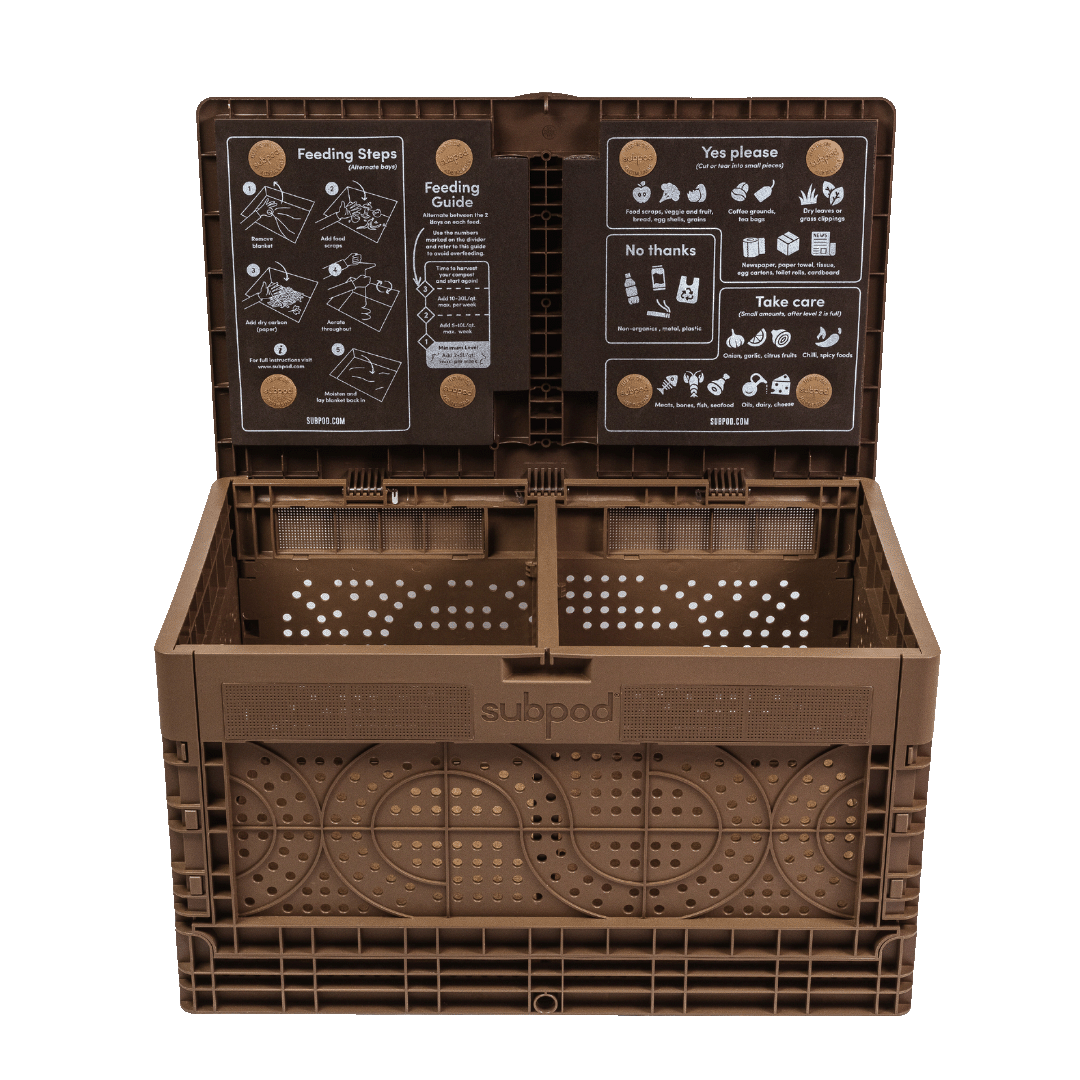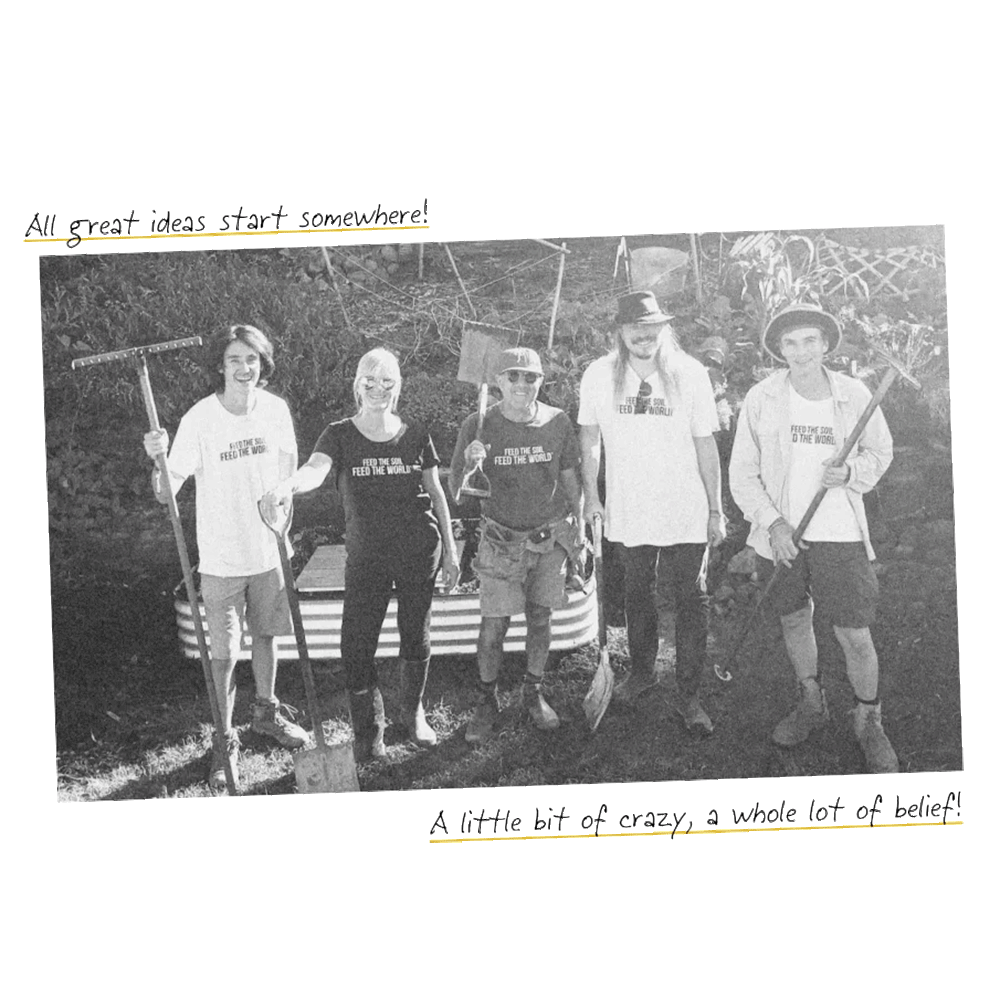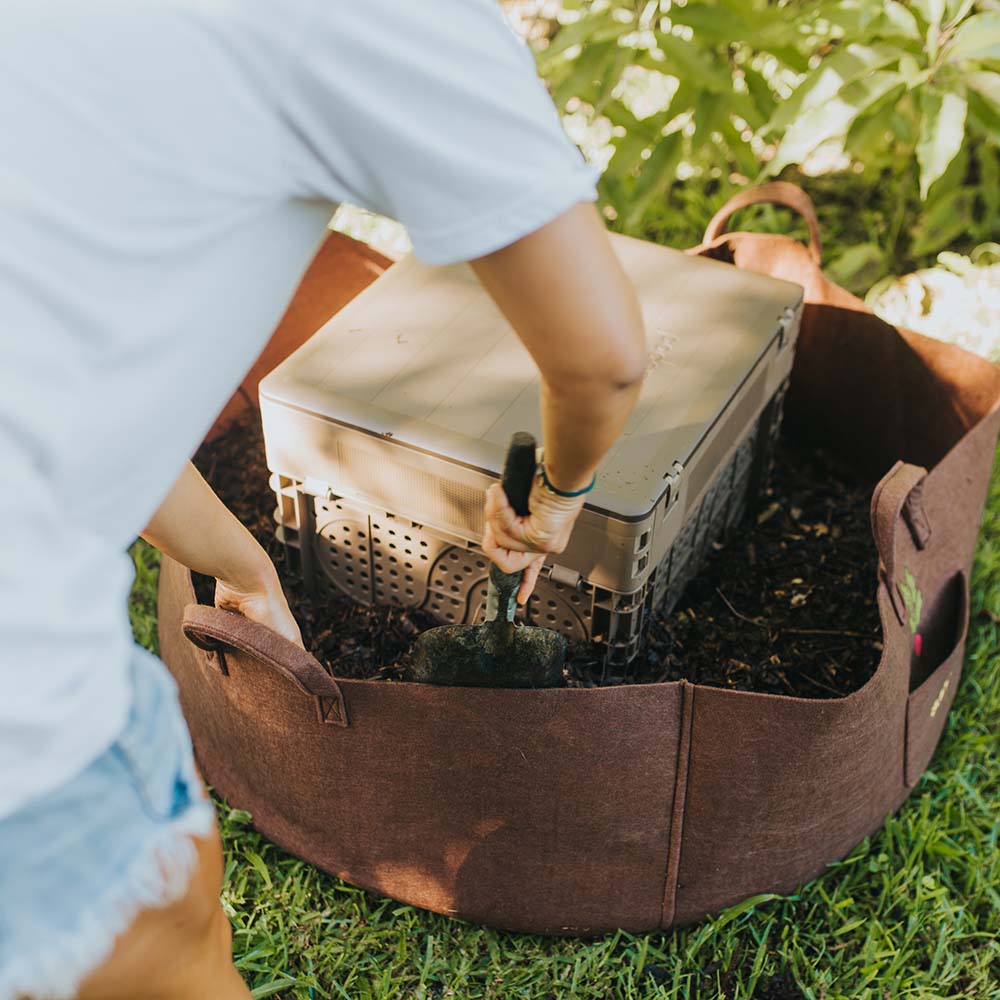Faults & Warranty Claims
Orders, Shipping & Delivery
How much does shipping cost?
We offer a flat rate of $14.
Delivered to your door from our local USA warehouse with world class courier services. You'll be provided with a tracking number once your Subpod is dispatched, knowing exactly when you'll receive it.
How long does dispatch take?
All orders for in stock items are dispatched within 2 Business days!
Shipped from our L.A or Dallas warehouses via UPS, depending on your location.
How do I track my package?
You will receive a shipping confirmation from us when your order has been dispatched from our warehouse, and a second email with your Tracking Number once the package has been processed with the Courier Company.
If you have received notification from the courier company that your order has been delivered but you have not received it, we recommend first calling them directly to investigate further.
How long will it take to get my orders?
It depends on where you are. Orders processed here will take 5-7 business days to arrive. Delivery details will be provided in your confirmation email.
I have received the wrong item!
Very occasionally we may accidentally ship the wrong item to you. If you have received an incorrect item, let us know as soon as you can, ideally within 3 business days of receiving your delivery. We will offer to send you the correct item and arrange for the pick up and return of the incorrectly shipped item at no cost to you.
There are items missing from my order?
Our items ship out from multiple warehouses and this means different products may ship from different locations and may not arrive at the same time. Once an item has left our warehouse you will be sent a "shipped" email confirmation with tracking details. The email will specify which items have shipped and you will receive a separate email for items from multiple warehouses.
If the tracking for the missing items shows as delivered then please let us know within three business days which item is missing and we will further investigate this
Can I cancel my order or remove an item from my order?
You may request to cancel an order or an item from your order up to 12hrs from placing the order.
After 12hrs your order may have reached the dispatch processing stage, cancellations may not be possible.
Can discount codes be used on sale products?
Discount codes are not valid on already reduced items.
How do I use a gift certificate or discount code?
After you have added all the items to your cart, please go to CHECKOUT. You will then have the option to add your discount code or promo code to your order. Please note, only one discount code can be redeemed per order.
Exchanges & Returns
All products can be exchanged or returned within 60 days, submit your details below and we'll be in contact with you.
Do you offer exchanges?
Did you change your mind or need a different size?
We accept exchanges on all our products as long as:
- The order has not exceeded 60 days from the original date of delivery.
- Garments still has all tags intact
- Packaging is intact and undamaged
If the item(s) you would like to receive in exchange is not available, by default, your request will be processed by issuing you with an online store credit for the amount of your original purchase.
- All exchanges may take up to (5) business days to be processed, once received.
- All exchanges must be even-exchanges only.
Do you restock sold out items?
While our core range (Subpods, Grow Beds, Aerators & Worm Blankets) are restocked to meet demand, our Grow Wear & Garden Tools may not be restocked regularly, if at all. We are constantly evolving and our accessories range continues to grow and change based on feedback from the Subpod community.
The best way to keep up to date with all our new products and find out when your favorites are back in stock is to join our mailing list - you can do so at the bottom of this page.
How long until I get my exchanged item?
We aim to have all parcels processed within 72 hours once we receive them.
We do our best to completely process exchanges within 2 days from the date they arrive. During high-traffic periods, it may take up to one week for an exchange to be processed.
What do I do if my item arrives damaged of faulty?
Unfortunately items are occasionally damaged in transit or faulty.
If an item arrives and the packaging or the item itself is clearly and significantly damaged/faulty, you should take photos or video showing the damage/fault, refuse to accept the delivery and contact us immediately. We'll share your feedback with our delivery partners and suppliers to ensure our service and the quality of packaging is improved.
If you notice that an item is damaged/faulty after it has been delivered to you, please take photos or video clearly showing the damage/fault and contact us as soon as possible, ideally within 3 business days of receiving your delivery.
The type of remedy we offer will depend upon the circumstances. We will work collaboratively with you to find an outcome that you're happy with. For example we may arrange to:
- Suggest a self repair (with an offer of compensation to you)
- Offer a partial or full store credit voucher or refund
- Replace the product (subject to availability)
- Arrange for the product to be returned to us.
If we require you to return the product to us, we will pay the cost of the return.
What if my tracking number doesn't work?
If the tracking is not showing up anything, or is saying invalid please check again in 48hrs. It can take upto 48 hours for the tracking to update.
If the tracking still does not work after 48 hours then get in touch with us and we will investigate further.
Returns
All products can be exchanged or returned within 60 days, submit your details below and we'll be in contact with you.
Can I return my item?
Things not quite right? All good! We know that sometimes an item may not fit or be right.
If you're not 100% satisfied with your purchase, you can return your item(s) within 60 days of the date of delivery and we will be happy to provide you with a store credit or refund if you meet the below return conditions.
To be eligible for a return, please make sure that:
- The product was delivered in the last 60 days
- The product is in its original packaging
- The product isn't used or damaged You obtained a Return Merchandise Number (RMN) from us
To obtain a Return Merchandise Number (RMN), please complete the form at the bottom of this page or get in touch:
By email: hello@subpod.com
We will email you a return label within 1-24hrs.
Do you restock sold out items?
While our core range (Subpods, Grow Beds, Aerators & Worm Blankets) are restocked to meet demand, our Grow Wear & Garden Tools may not be restocked regularly, if at all. We are constantly evolving and our accessories range continues to grow and change based on feedback from the Subpod community.
The best way to keep up to date with all our new products and find out when your favorites are back in stock is to join our mailing list - you can do so at the bottom of this page.
When will my return be processed?
We will process your return within 4 business days from the time of receiving your items.
We kindly ask our customers to allow up to 10 working days during busy sale periods for returns to be processed due to large volumes.
We will notify you via email once your return has been processed.
Please note: It can take up to 14 days for returns to arrive at our warehouse depending on postage times and the return location.
Who pays for return shipping?
You now have the option to return your full price items back to us for FREE if you select our online store credit option when submitting your returns form.
Simply lodge your return using our returns form here, enter your email address used to place your order, select the eligible item(s) you wish to return and select the store credit option.
You will be emailed a pre-paid returns label to attach to your parcel which you can lodge at your nearest post office free of charge.
Your store credit will be processed within 4 business days after it arrives back to our warehouse.
Credit notes are valid for 12 months and will be issued as an online gift card.
You will be emailed a unique code to enter upon checkout.
Free return shipping is currently only available to the following regions:
- Australia
- Mainland USA
- Europe
- United Kingdom
Please note: Customers shopping from outside of these regions are required to pay for their return shipping costs.
What do I do if my item arrives damaged of faulty?
Unfortunately items are occasionally damaged in transit or faulty.
If an item arrives and the packaging or the item itself is clearly and significantly damaged/faulty, you should take photos or video showing the damage/fault, refuse to accept the delivery and contact us immediately. We'll share your feedback with our delivery partners and suppliers to ensure our service and the quality of packaging is improved.
If you notice that an item is damaged/faulty after it has been delivered to you, please take photos or video clearly showing the damage/fault and contact us as soon as possible, ideally within 3 business days of receiving your delivery.
The type of remedy we offer will depend upon the circumstances. We will work collaboratively with you to find an outcome that you're happy with. For example we may arrange to:
- Suggest a self repair (with an offer of compensation to you)
- Offer a partial or full store credit voucher or refund
- Replace the product (subject to availability)
- Arrange for the product to be returned to us.
If we require you to return the product to us, we will pay the cost of the return.
What if my tracking number doesn't work?
If the tracking is not showing up anything, or is saying invalid please check again in 48hrs. It can take upto 48 hours for the tracking to update.
If the tracking still does not work after 48 hours then get in touch with us and we will investigate further.
Can I return a product I bought from of your independent retail stores?
If you wish to return a Subpod item that you purchased through one of our retailers, you will need to contact them directly.
We do not accept returns on items that were not purchased directly from our online store.
Product Questions
How is Subpod different from other composting systems?
Subpod is an in-ground worm farm, the first ever of its kind! Above ground compost systems are often difficult to maintain and attract pests. Worm farms that are above ground also fail when they get too hot or cold – but not Subpod. Subpod sits 90% below the soil level in your garden, so the compost worms that live inside can come and go freely (nourishing the soil directly). The soil insulates your compost and protects your worms from harsh weather, so you can keep composting no matter the season!
We designed Subpod to deal with all the common issues associated with traditional compost systems:
- It’s aerobic, using odourless microbes to speed up the composting process
- The ventilation panels keep it smell-free with fresh air
- It’s pest-proof and lockable (great if you deal with raccoons)
- It doubles as a garden seat, subtly hidden amongst your plants
Does Subpod need to be buried underground?
Yes! Being underground is what makes Subpod different from other compost systems. The soil provides insulation and a way for worms and microbes to explore your garden and feed your plants. Above ground compost systems struggle to keep worms and microbes comfortable, and even alive, in summer and winter – but underground they're safe and happy (which is the secret to good compost).
What can I compost in Subpod?
You can compost a much bigger variety of materials in Subpod than in other worm farm systems! See the full list below:
FOOD WASTE
Most food waste can be composted in Subpod without worry. Fruit and vegetable scraps, eggshells (crush them first), coffee grounds, used tea leaves, spoiled plant-based milks, grains, pastas, breads, nuts (and their shells), seeds, pits, husks and so on. Small amounts of meat, seafood, dairy foods, citrus, onion and garlic may also be added. Subpod can also process spicy herbs, peppers and oils but it’s best to introduce these slowly in small amounts at first, and only once your worms are fully established (after around three months).
PAPER & CARD
Most scrap paper and cardboard can be added to Subpod, as long as it’s not laminated or super glossy. Again, the smaller the pieces, the better. Junk mail, office paper, bills, envelopes (no plastic windows), post-it notes. Paper plates, tissues, egg cartons, paper cupcake liners, baking paper, even card and paper packaging is fine.
NATURAL FIBRES
Cotton wool balls and pads, tampons, toilet paper cores and even natural latex condoms and gloves can go into Subpod. Old clothing, face washers, napkins, tablecloths and very old towels can be used as long as they are made from natural fibres like cotton, tencel, linen, hemp or wool (no polyester, nylon, acrylic or blends) – just shred them into small pieces first. Washer and dryer lint is okay too, as long as it comes only from clothing made from natural fibres.
WOOD AND BAMBOO
Sawdust (no paint) is great. Toothpicks, disposable wood, bamboo and bioplastic cutlery and crockery can be composted, along with dead matches, bamboo skewers, garden prunings (cut 'em up small), and charcoal from the fireplace – as long as you wash off the ash which is too alkaline for Subpod.
HUMAN AND ANIMAL WASTE
Human hair and nail trimmings, used facial tissue, used cotton bandages and sanitary items can all be composted in Subpod, as long as they are made from 100% natural fibres. Pet hair of all kinds is fine, along with soiled newspaper and hay cage liners and faeces from vegetarian pets and livestock (rabbits, guinea pigs, hamsters, cows and horses). Dog and cat faeces are NOT suitable for Subpod if you’re eating the plants growing around it. But fine if you want to have a separate one for this purpose.
NOT COMPOSTABLE
You cannot compost non-organics such as plastic, tin cans, cigarettes, building waste, toxic waste, glass, or any other similar materials in Subpod.
How much food waste can I compost in Subpod?
One fully functioning Subpod can compost 15kg (30lbs) of food waste a week! The average family generates roughly 7.2kg of food waste a week, so Subpod can handle about double the waste your family should need it to.
It can take 1 - 3 months for the worm population inside your Subpod to build enough for it to compost at peak levels. It’s also possible to optimise your Subpod to compost even more waste by incorporating biochar into your system – but that's a little advanced.
How many Subpods do I need?
An average household can compost all their food waste with 1 Subpod! If there are 8+ people in your home, you may want a second Subpod.
The average family generates 7kg (15lbs) of food waste a week. An established Subpod can compost 15kg (30lbs) of food waste a week – two families worth of waste! It takes 1 - 3 months for your Subpod to reach this capacity. Compost worms balance their population against the amount of food waste you feed them though, so you can still compost with Subpod even if you’re a household of one.
How do I harvest compost from Subpod?
To harvest your compost, just stop feeding one side of your Subpod and only feeding the other compost bay. Your worms will naturally migrate to the other side after around 2 weeks – leaving you a full bay of rich compost ready to be scooped out and spread through the garden!
You can also use the 'Sunlight Method'. To do this, scoop out your compost, worms and all, and pile it onto a tarp. If you let this sit in bright sunlight for 5 minutes, the worms will move to the bottom center of the pile and you can collect the worm-free castings! Once you're done, just return the worms left to your Subpod.
Can I compost with Subpod in winter?
Yes! But you may need to do a little tweaking. Subpod relies on the worms and microbes to compost and they can go dormant if they get too cold.
Subpod is naturally insulated by the surrounding soil so during winter the temperatures inside will be higher than any above ground compost system. But things will slow down if the temperature drops below 55 F (12C). We’ve found 3 proven methods that keep your worms warm and happy over winter.
Does Subpod need worms?
Yes! Subpod is a vermi-composting system, which means it relies on compost worms to break down your food waste. Without compost worms, Subpod can't do its job.
We recommend buying worms for your Subpod locally if possible, but you can also find them online. If you need more information on how to buy worms, read this blog!
Do worms come included?
Unfortunately, no. But we do have a few tips though!
- Try to purchase worms locally. Worms always seem to be happier if they don’t have to be shipped for miles across the country.
- Get a diversity of worms. There are 3 main types: Red Wigglers, Night Crawlers and Tigers. Each is better suited to different environments and
temperatures, so it’s helpful to get all 3.
- Jump on to our growhub community and see if there’s a local Subpodder that will give you some worms. Make a friend and score some worms at the same time!
How many worms should I start with?
It’s best to start your Subpod with about 2,000 worms. It is possible to start with only 1,000 but you’ll have to give your worms a little extra time and TLC while they build up their population.
Here’s a video showing you from start to finish how to get your worms ready.
Do I need a Subpod for each garden bed?
Nope! Just pick the bed you want to boost growth in the most. Subpod feeds the garden bed as the worms and microbes explore the soil, fertilising your plants at the root level. Once you’ve generated some compost you can spread it around your other garden beds and they’ll get to enjoy the benefits of Subpod too.
Is Subpod made from plastic?
Subpod is made from Polypropylene (P.P.) which is a type of plastic. As an eco-conscious company this might seem like an odd choice, but it’s the most sustainable option available right now.
We experimented with steel and bioplastic Subpod prototypes, but they all deteriorated way too quickly. It would have been unethical to sell a product with only a 1 - 2 year lifespan, and bad for the planet to constantly ship new replacements.
We strongly oppose toxic & single use plastics – which is why we chose Polypropylene. It’s durable, capable of withstanding a wide range of temperatures, naturally BPA free and food + water safe. If you look up your fridge’s materials, it’s likely that P.P. is helping to keep your veggies cool!
We’re very excited for the future of bioplastics and other biomaterials, and we can’t wait until there’s an even more sustainable option for us to make Subpod with.
What is covered by your 2 year warranty?
Subpod Classic & Subpod Mini are both covered by a two year warranty. All other products apart from T-Shirts & Hats are covered by a one year warranty.




